This post is a guest submission by one of our customers at BuildFire for Segment’s Chain Letter blog series. The Chain Letter series profiles clever uses of Segment Connections partner tools that, when chained together, lead to some pretty advanced programmatic models, custom messaging strategies, and more. Thanks to BuildFire and Proof for sharing their story!
—Segment
From small businesses to Fortune 500 leaders, developing a mobile application is an arduous and often confusing decision for any company. Building and maintaining an app can be time-consuming, expensive, and requires a ton of ongoing maintenance. Plus, the world of app development is extremely competitive with thousands of agencies and independent developers competing for clients. That leads to a lot of noise around what can be reasonably produced within your budget and timeline.
My company, BuildFire, has carved out a niche in the space by creating a streamlined software platform to help our customers build beautiful apps quickly and affordably. Over the past 5 years, we’ve developed 10,000+ apps for over 10 million users across a variety of industries.
As the CEO and marketing leader of the business, I am tasked with acquiring these high-value customers in the most cost-effective way possible. We’ve had great success with our existing funnel, but we’re always looking for new ways to improve our signups and make the on-site experience more relevant for visitors.
Personalizing every customers’ experience
I frequently deploy A/B tests and other CRO experiments, but personalization at scale (while maintaining proper analytics and tracking) was never feasible since we lacked a dedicated engineer on our growth team. So we set out on a search for a personalization partner to help identify who our visitors are and improve their on-site session. After studying the market and seeing what solutions existed, we partnered as an Early Access customer of Proof Experiences to tackle personalization in our signup funnel.
We chose Proof Experiences in part because they were a new Segment integration. We use Segment to capture event data on our site, store enriched first-party data, and create a data infrastructure to cater to customers in every interaction they have with our brand. Using Segment has been critical to our growth strategy and allowed us the footing to launch many experiments, so finding a personalization partner that could directly integrate with Segment was a must-have for our team.
Proof Experiences is a B2B personalization tool that allows us to create audiences for different customer segments and then deploy custom website experiences for them. We use it to personalize headlines, swap out testimonials, autofill form fields, and much more. It easily hooks into our favorite A/B testing (Google Optimize) and analytics tools (Amplitude) through Segment. Experiences also includes the ease of use and point-and-click visual editing systems I’m used to using in other landing page and website builders.
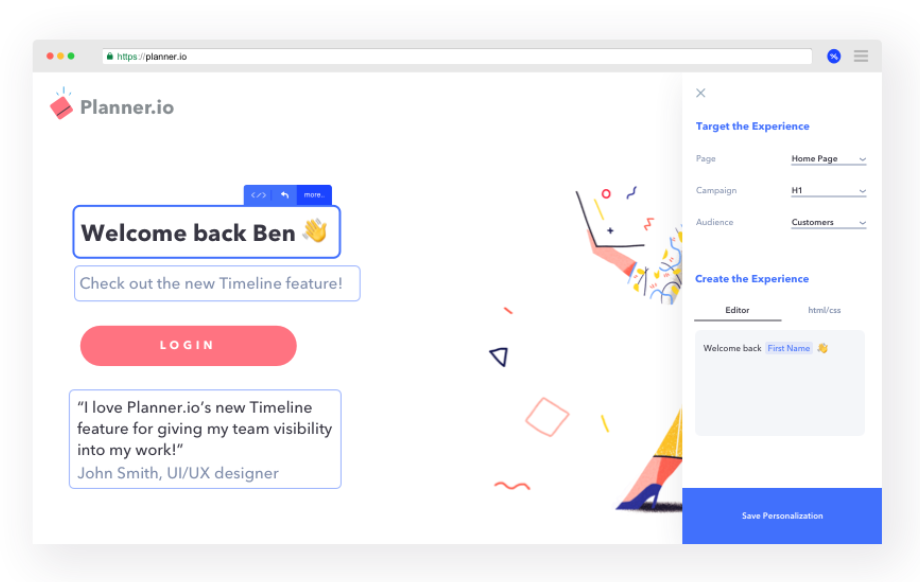
The Proof Experiences visual editor allows you to click and edit live pages
Integrating Segment and Proof Experiences
Honestly, we were skeptical about the results we could get from personalization, but we wanted to give it a thorough shot. Proof Experiences allows us to collect data about our on-site visitors to use in audience creation. Then, we can enrich the contact with data from Clearbit or from our data in Segment. Finally, we can launch custom audiences for deploying personalized experiences quickly and with ease. We use their platform to bucket our visitors by industry (E-commerce, Education, Non-Profit, etc) and then we use that segmentation as a starting point to deliver more relevant content to our visitors. In the Experiences editor, we can visually swap out headlines, images, value props, CTAs, testimonials, and other on-page elements — without having to launch new landing pages.
Plus, we can conditionally hide live chat, add social proof to pages, and prefill forms from the Experiences platform. It’s powerful and it can all be done without having to get my engineering team involved—a huge factor in our decision to personalize in the first place.
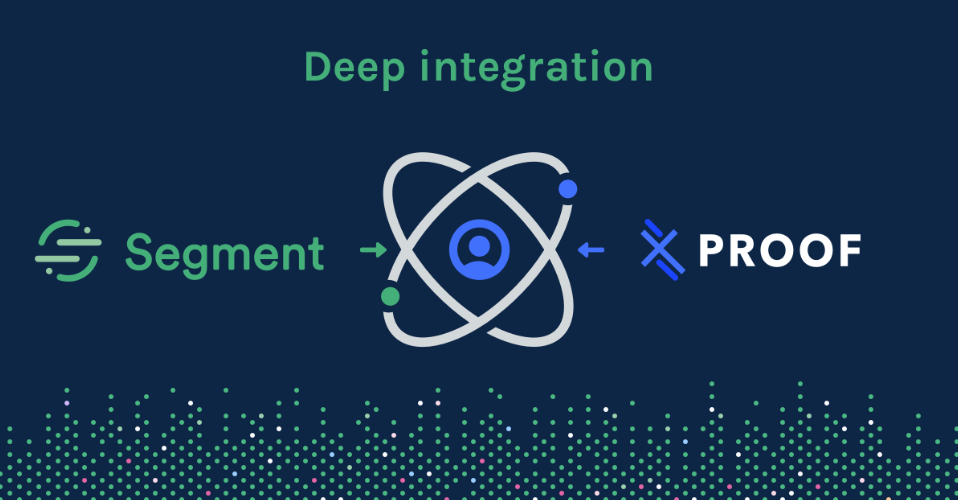
And since Proof provides deep direct integration with Segment, setting up the connection was easy. In Proof Experiences, you simply generate an API key and name it Segment.
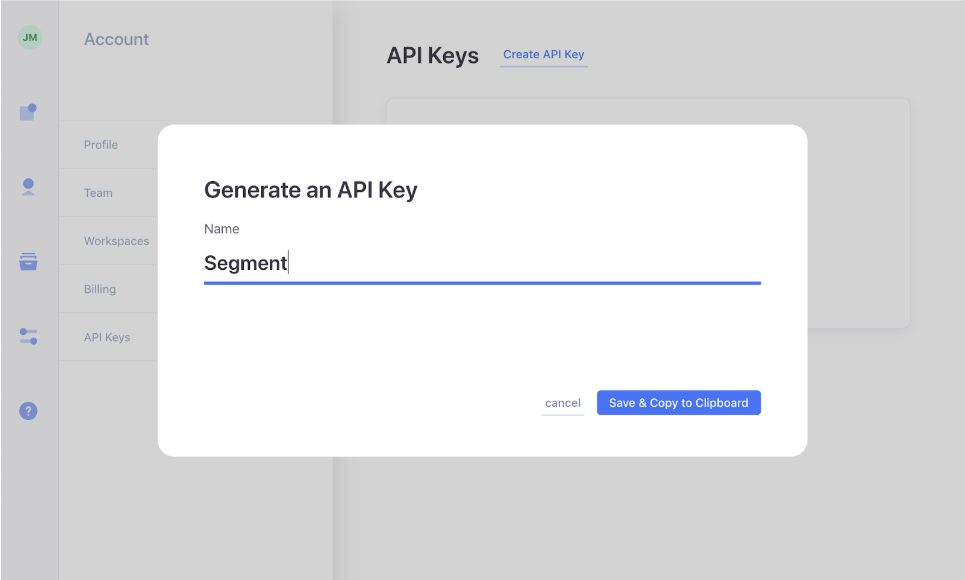
Then, you head to the Proof Experiences Destination in the Segment catalog and enable it. You paste your API key into the configuration window and click Save.
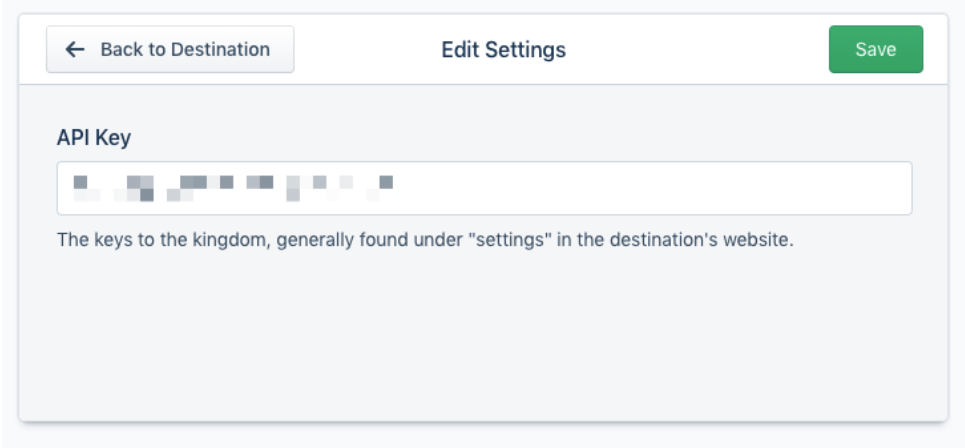
And voila! You’re all set up to send data from Segment into Proof and have data flow from Proof into Segment.
Personalizing our signup flow to increase MQL’s by 46%
When we first started working with the Proof Experiences team, we looked through our funnel together and identified the metrics that we cared most about improving. Ultimately, as a growth team, we’re measured by the number of customers we acquire and the revenue those customers add to the business. For that reason, we decided to target an increased number of MQLs as it is a key leading metric to our revenue growth goals.
To increase MQLs, the Proof Experiences team recommended deploying several “playbooks” to improve the current performance of our signup flow.
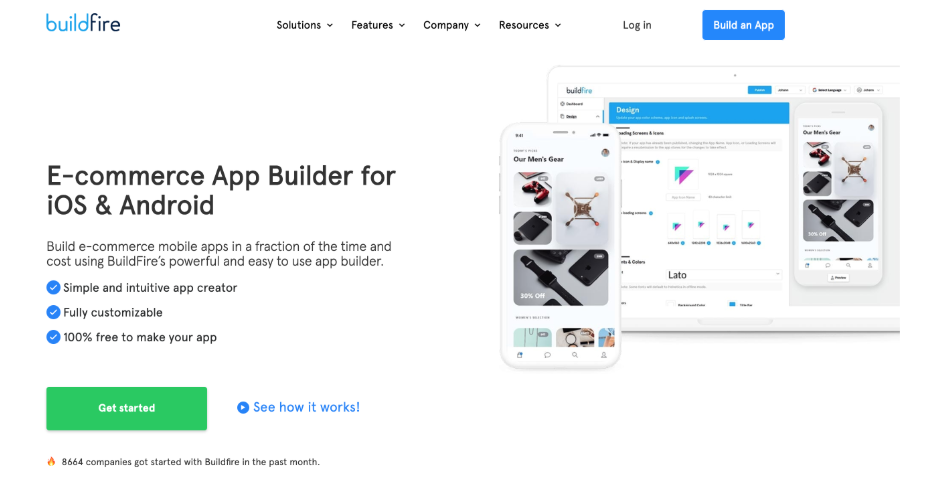
BuildFire homepage
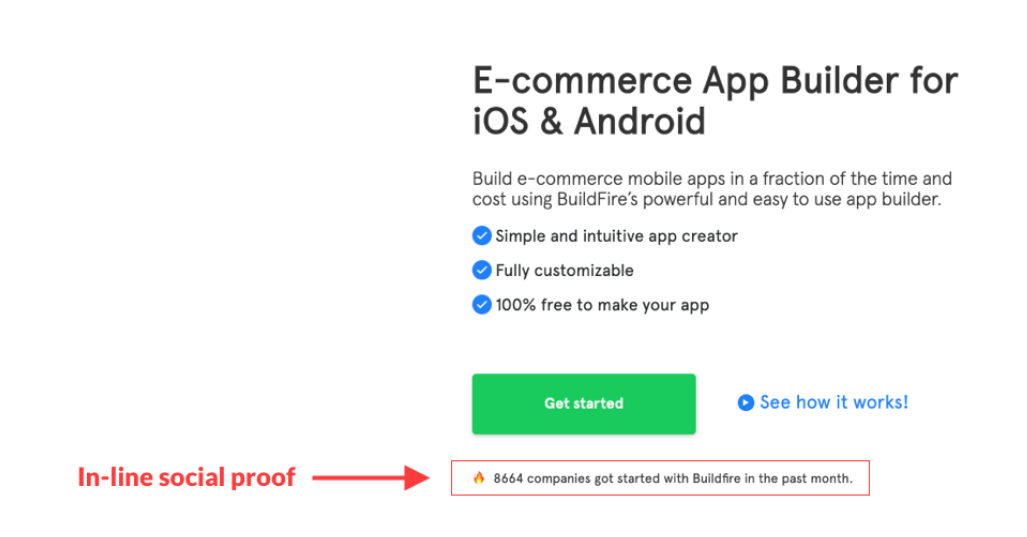
Our first major playbook focused around the inclusion of live updating social proof on our homepage and signup flow. By including in-line social proof under next-step CTAs, we were able to increase the percentage of visitors continuing onward to the next page. By mentioning the number of customers that signed up in the last month (8664 in the screenshots above and below), we were able to address a common customer objection and provide data to incentivize our visitors to continue to the next step.
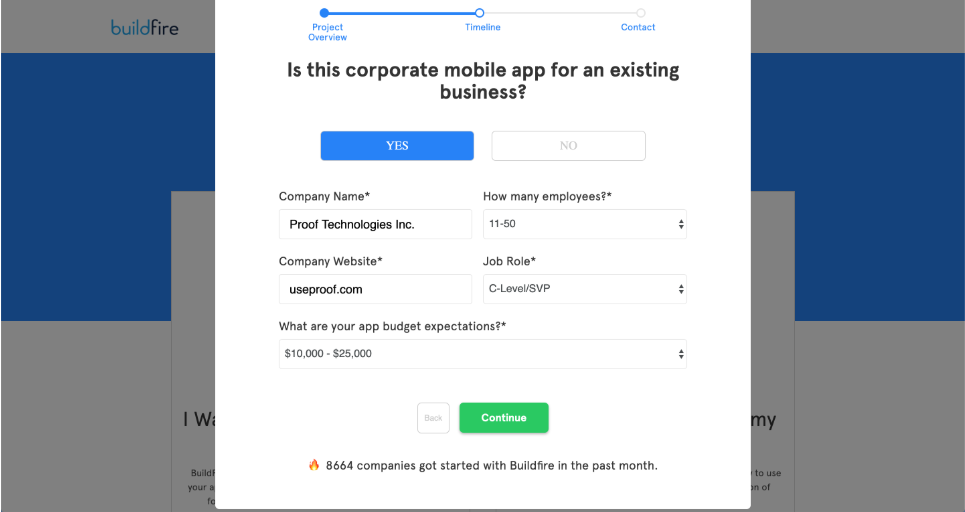
The second playbook focused on using email addresses to autofill demographic and firmographic data in the signup flow. Before using Experiences, we collected emails in a form field on the last page of the signup flow. In order to personalize the rest of the signup flow, we moved the email field to the first step of the signup flow to allow Proof Experiences to call Clearbit’s API to find out a person's identify if the data wasn’t already stored in our Segment warehouse. If it was, we initiated an Identify call to pull in other fields to personalize the following 3 pages of our flow.
Finally, we’ve identified that we are much more likely to close a deal if we can quickly get a customer on the phone after they sign up. After successfully completing our signup flow, we push registrants to schedule a call with our Sales team. To humanize the messaging on this page and to increase the likelihood of a call, we used Proof Experiences to adjust a headline to match a visitor’s responses to earlier questions.
Rather than having a one size fits all headline, we used personalization to adjust it for each audience bucket. Since the visitor indicated they were interested in building an app for their business, the headline in the screenshot below adjusted to indicate the meeting is with a Corporate App consultant.
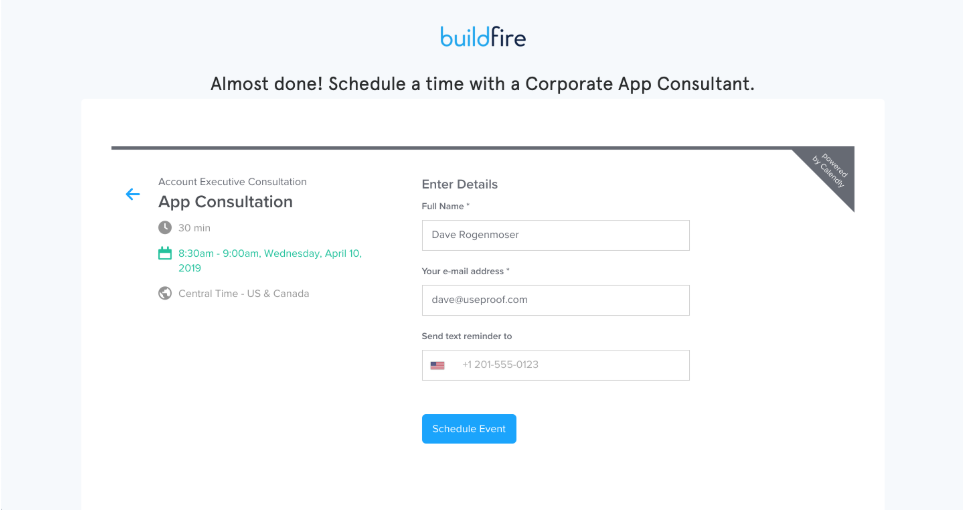
We’re an extremely data-driven company, and we watched our metrics closely as we launched this experiment with Proof. We A/B tested our initial personalization experiment, and we were able to conclude with 95% significance that using Proof Experiences and Segment in our signup flow increased our MQLs by 46%. We were blown away by these results.
Based on our data from this experiment, we are working to deploy even more ways to use the Segment and Proof Experiences integration to personalize our site. It’s been a great way to create a more human website for our visitors while improving our most important growth metrics.

The State of Personalization 2023
Our annual look at how attitudes, preferences, and experiences with personalization have evolved over the past year.